The Cultural Tapestry of Global Street Food: Exploring Traditional Flavours Worldwide
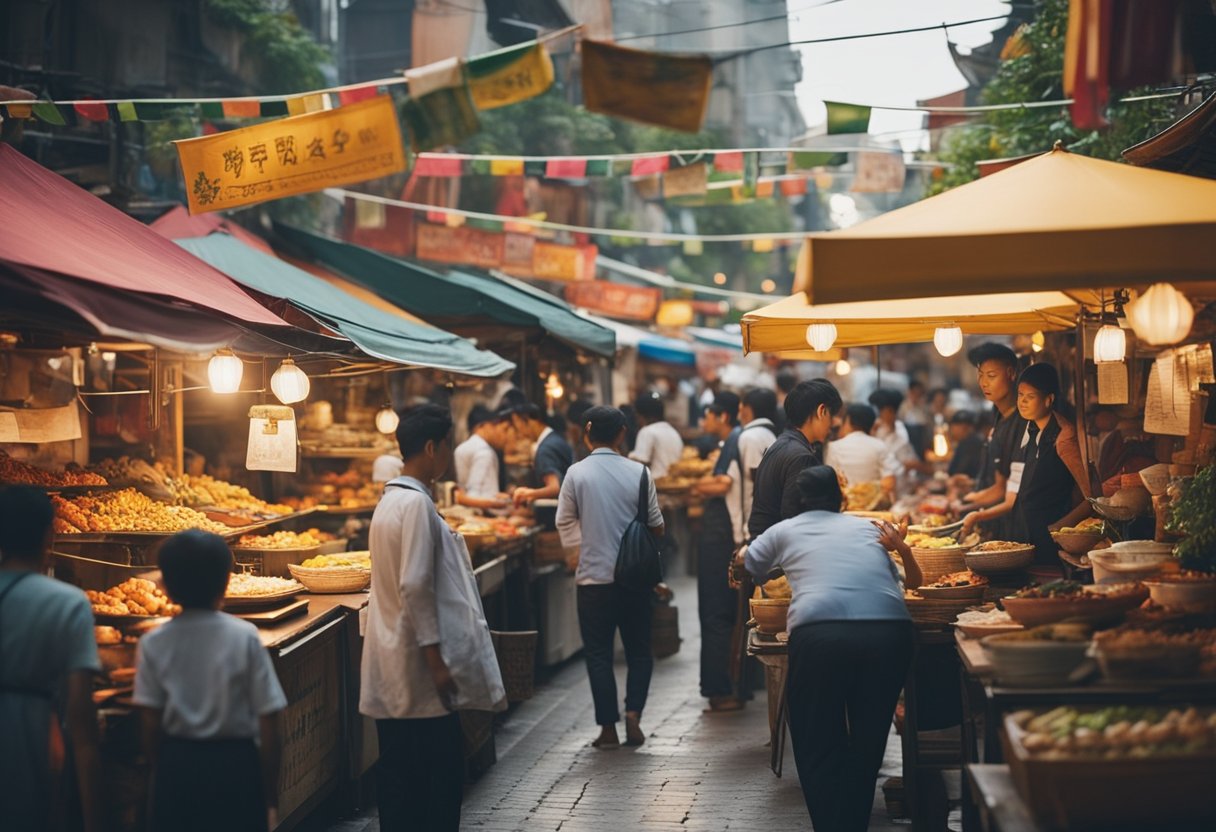
Updated On: April 23, 2024 by Ciaran Connolly
Street food offers a vibrant tableau of the world’s cultures, delivering more than just nourishment; it’s an edible narrative of tradition and community. Strolling through the narrow bylanes bustling with vendors, we unearth the historical roots of each dish, each ingredient whispering stories of trade routes, cultural exchanges, and local customs. These informal culinary spaces invite us to indulge in an array of flavours that reveal the true essence of a place, forging a deep connection between food and cultural identity.
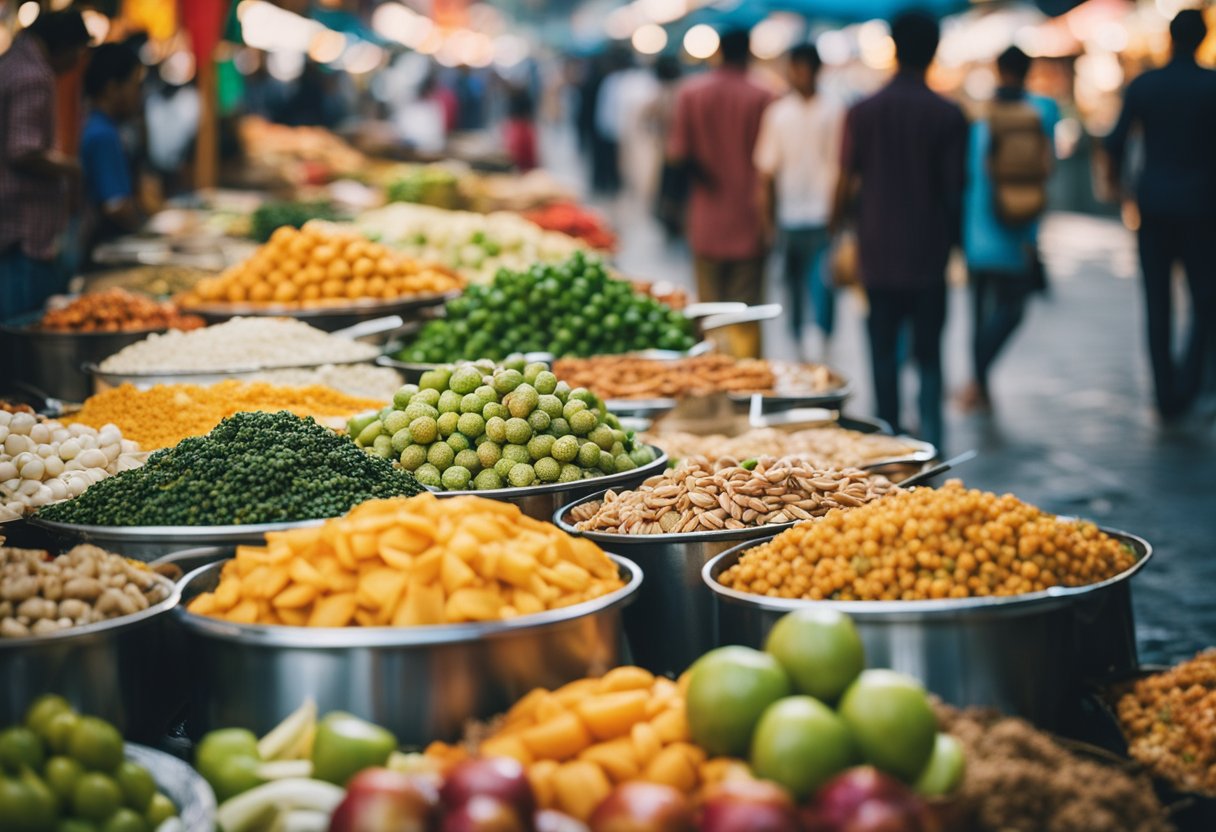
Around the globe, from the aromatic markets of Bangkok to the colourful food carts of Mexico City, street cuisine is a testament to culinary diversity. It reflects the societal dynamics and communal ties that shape our existence. Far more than a mere transaction of goods for currency, the act of sharing street food embodies the collective spirit, showcasing how traditional cooking techniques and presentations are handed down through generations. Each bite is a journey through time, a delicious exploration of humanity’s cultural fabric.
As we unravel the evolution of street foods across continents, it’s evident that these dishes do more than adapt to new environments—they also challenge and transform them. These humble yet dynamic dishes have the power to unite people, often becoming a hub for social interactions and community building. While they may face challenges, the resilience and adaptability of street food cultures ensure that their legacy continues, whetting appetites and enticing explorers to embark on new culinary adventures.
Key Takeaways
- Street food serves as a conduit for cultural storytelling and identity.
- It highlights the profound connection between food, history, and community.
- These culinary traditions continue to evolve and shape our global culture.
Historical Roots of Global Street Food
We behold a rich history with the lineage of street food intertwined with the fabric of global culture. It is an edible narrative that spans across time and continents.
Street Food Chronicles: From Ancient Markets to Urban Eats
Street food has existed since the dawn of civilisations, where the earliest urban spaces witnessed vendors selling breads, olives, and meats in bustling marketplaces. These early expressions of street food culture were more than a convenience, they were integral to the daily life of citizens, providing sustenance for those unable to prepare meals at home. In ancient Rome, thermopolia—establishments serving ready-to-eat food—paved the way for today’s diverse urban street food scene.
Silk Road: The Early Globalisation of Street Food
The Silk Road, a network of trade routes connecting the East with the West, was instrumental in the dissemination of culinary traditions. It not only transported spices and silk but also ideas and ingredients, forging the early stages of what we now recognise as global street food culture. Markets along these routes served as melting pots where travellers and traders from different cultures exchanged recipes, leading to the creation of new dishes. This was the inception of street food’s global journey, transcending local confines and evolving into a complex tapestry of global culinary traditions.
Cultural Significance and Identity
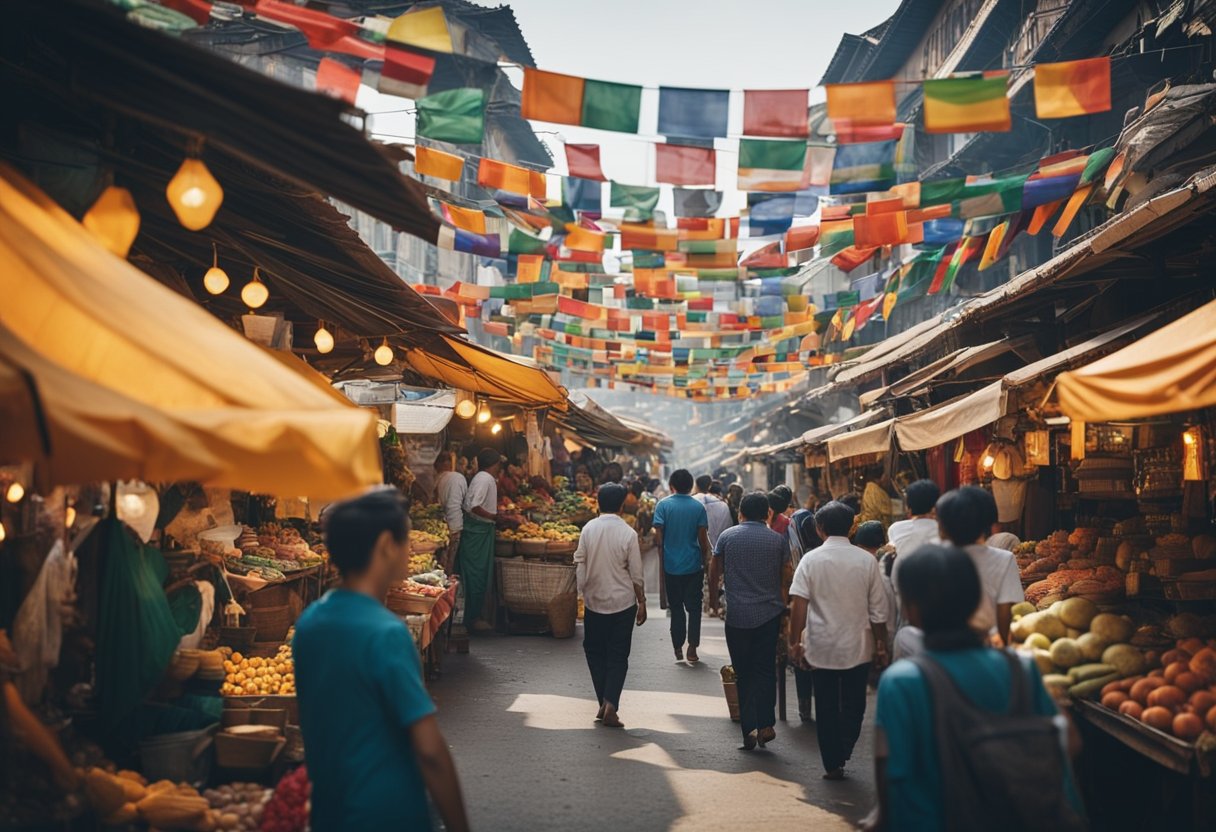
In this exploration of street food, we uncover its profound impact on cultural heritage and identity. It’s a vivid display of community, unity, and diversity, capturing the essence of local culture.
Street Fare as a Reflection of Community and Unity
Street food is much more than a simple meal; it’s a tapestry woven from threads of tradition that encapsulates community spirit. Each stall and cart offers a glimpse into the collective memory and shared values of the neighbourhood it serves. This fare is often a result of generations of knowledge, passed down to tell the story of a community’s cultural evolution. In places like the vibrant alleyways of Bangkok’s markets, the act of gathering to eat is a daily expression of unity, symbolising togetherness through the shared pleasure of food.
Food as a Universal Language of Diversity
While street food reflects local practices, it also speaks a universal language that everyone understands: the language of taste. Through the diverse flavours from carts in Mexico City to noodle stands in Tokyo, street food is a powerful conveyor of diversity. It’s not just a meal; it’s an expression of the identity of the myriad cultures it represents, inviting people from all walks of life to savor a part of a cultural heritage they may not call their own. Each dish tells a unique story, fingerprints of taste that extend a warm invitation to experience and appreciate the richness of a local culture.
Exploring Culinary Diversity Around the World
The intricate mosaic of global street food offers a palatable passport to the traditions of different cultures. It’s a culinary voyage that spans continents, illustrating the rich diversity found in the local specialties and global delights of cities like Bangkok, Mexico City, and Istanbul.
Connexion of Cuisine Across Continents
We find that the essence of street food lies in its ability to tell a story of cultural intertwining. In bustling markets of Bangkok, the fragrant spices and zesty notes pay homage not just to Thailand but hint at Chinese and Malay influences that have mingled over centuries. Similarly, Mexico City’s tacos and tamales go beyond borders showcasing the indelible impact of Spanish and indigenous traditions in each bite. It’s in these flavours where one discovers the seamless connexion of cuisine across continents.
Local Specialties and Global Delights
Venturing through the narrow lanes of Istanbul, the sizzle of kebabs and the sweet allure of baklava offer a taste of the Ottoman Empire’s legacy, portraying how local dishes evolve into global sensations. These specialties, humble in their inception, echo a city’s identity and eventually, win hearts far from their origins. We notice that each locale proudly serves up its culinary diversity, creating a tapestry of tastes so rich that it becomes a rallying point for communal pride on a world stage.
Through exploring diverse global street food, we don’t just savour snacks; we participate in cultural dialogues. Whether it’s the spice-infused stalls of Asia or the vibrant food trucks in the Americas, they are all threads in the colourful and continuous fabric of human tradition and innovation.
Key Ingredients: The Building Blocks of Street Food
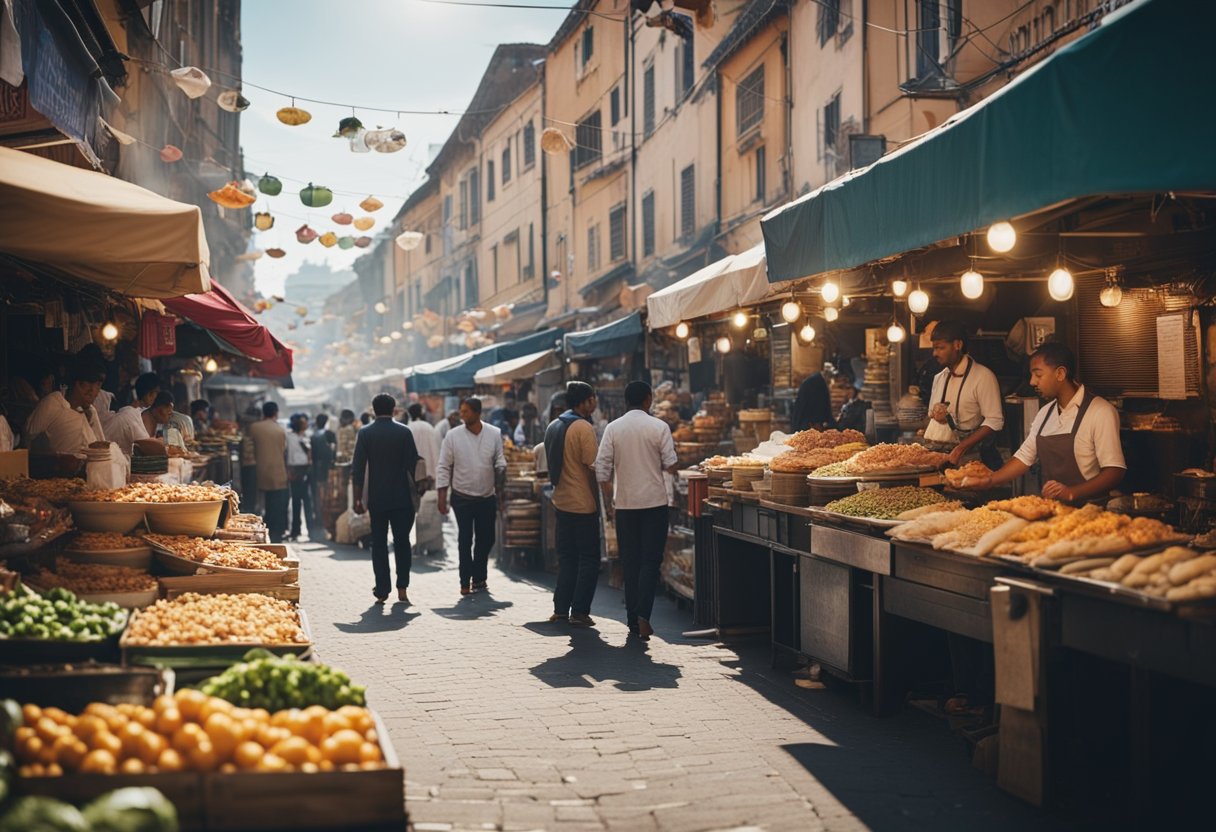
In every corner of the globe where street food thrives, the magic begins with the right ingredients. We understand that the building blocks of these impromptu culinary delights lie in the blend of spices, herbs, meats, and fresh produce.
Spices, Herbs, and Fresh Ingredients: The Flavour Alchemy
- Spices: Add depth and complexity to dishes; commonly used spices include cumin, coriander, turmeric, and chilli powder.
- Herbs: Provide freshness and aroma; popular herbs are cilantro, mint, and basil.
- Fresh Ingredients: Ensure vibrancy and nutrition; include garlic, onions, and ginger for foundational flavours.
Spices and herbs are the soul of street food, offering an alchemy of flavours to the dishes. Whether it’s the warmth of cardamom in a chai tea or the tang of lemongrass in a fragrant pho, these components are indispensable. Each spice and herb carries its own story, merging with others to create a symphony of tastes.
Vegetables and Meats: The Culinary Palette
- Vegetables: Range from peppers and tomatoes to sweetcorn and leafy greens.
- Grilled Meats: Often feature options like chicken, beef, lamb, and even fish, marinated with a blend of the above spices and herbs.
Just as a painter needs a palette to showcase creativity, street food chefs use vegetables and meats as their canvas. The smoky delights of grilled meats, interwoven with the textures and colours of vegetables, create dishes that not only tantalise the palate but also feast the eyes. From crunchy vegetables in a Vietnamese banh mi to succulent grilled chicken satay, these ingredients form the backbone of many beloved street food dishes.
Street Food and Social Dynamics

Street food serves as a vibrant intersection where culinary traditions meet social engagement. It’s a stage set for communal gatherings and the appreciation of cultural expression through tastes and aromas.
Communal Dining and The Social Fabric of Food
Communal dining at street food stalls plays a significant role in knitting together the social fabric of a community. It’s where we converge over shared tables, engaging in the age-old tradition of breaking bread together. Our culinary experiences become enlivened by conversation and communal joy, forging a shared identity rooted in the flavours of our streets.
- It’s common to see groups gathered around vendors, each bite a catalyst for dialogue and connection.
- Street food markets are often buzzing with energy, as locals and tourists alike exchange stories over heaped plates.
Street Food Vendors: Architects of Culinary Delights
Our street food vendors are the unsung heroes behind the culinary delights that grace our palates. They craft experiences that are not just about sustenance but about bringing joy, with their skills turning simple ingredients into extraordinary dishes.
- These vendors are curators of taste, blending tradition and innovation on the busy thoroughfares of our cities.
- Social media has become a tool for them to showcase their offerings, inviting more of us to partake in their crafted culinary journeys.
Our engagement with street food is not solely about the act of eating. It’s about reinforcing our community bonds, supporting our local vendors, and participating in diverse culinary experiences that represent the essence of our cultural mosaic.
The Art of Street Cuisine: Techniques and Presentation
The mastery of cooking techniques and the importance of presentation transform street food into art, creating a sensory experience that is both visual and aromatic.
From Grill to Plate: The Mastery of Cooking Techniques
We see the craft of street food in the diverse cooking techniques that are honed to perfection by vendors. Take, for instance, the rapid, rhythmic chopping on a wooden board, a technique often seen in Asian night markets, or the skillful flipping of a dosa on a hot tawa in India. Each method, whether it’s grilling, frying or steaming, contributes to the textures and flavours that make each dish unique. The sizzling of meat on a grill not only tantalises the ears but also sends out an aroma that beckons passersby.
The Visual and Aromatic Appeal of Street Eats
The presentation of street food is as important as the taste and smells. A neatly wrapped Greek gyro, with vibrant additions like fresh tomatoes and crisp lettuce, showcases the attention to visual appeal. Similarly, the bright colours of assorted Japanese takoyaki balls, meticulously lined up and topped with delicate flakes that dance in the heat, invite eaters with their aromatic cues. These visual elements help to convey the story and tradition behind each dish, creating an inviting display that promises an unforgettable gustatory experience.
The Evolution of Global Street Food
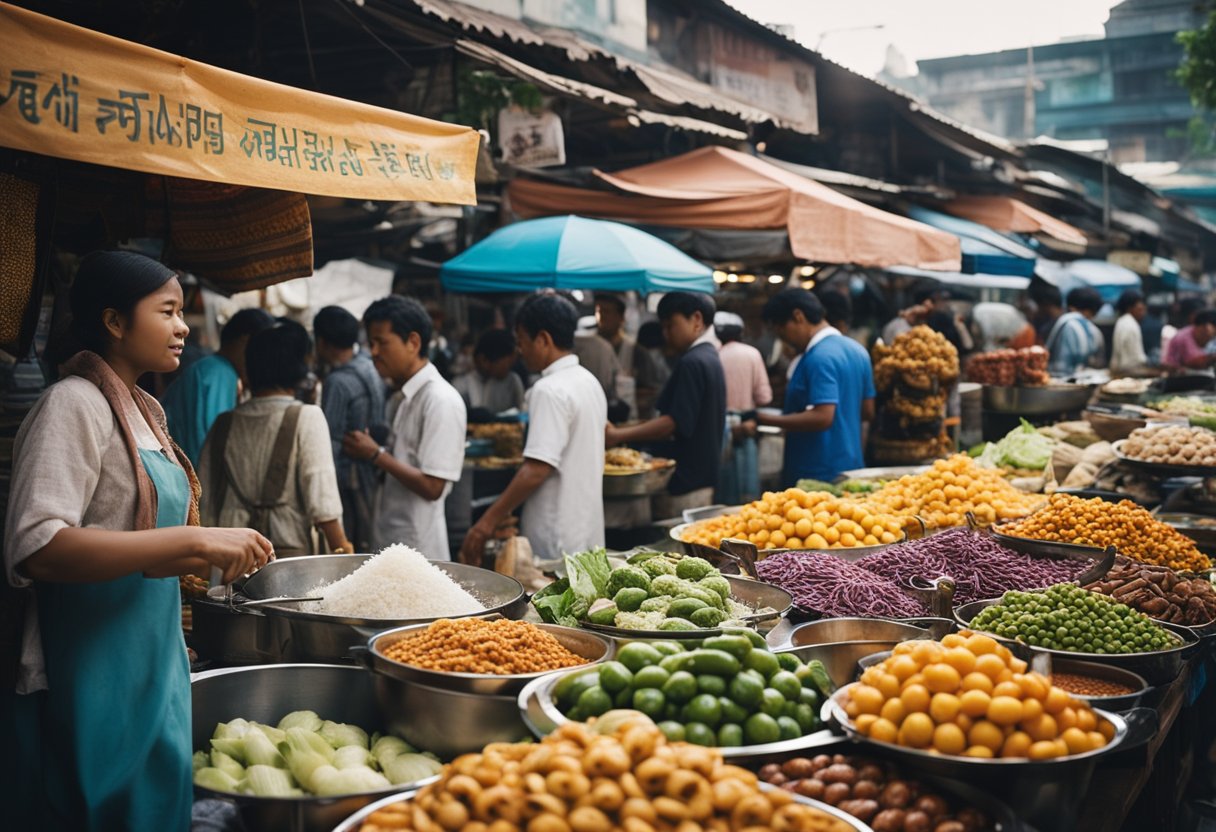
Street food has undergone a fascinating transformation from traditional local fare to a dynamic global force. It encapsulates a culinary journey that reflects the diversity and innovation of cultures worldwide.
Fusion Cuisine: The Innovations of Tradition
We’ve seen tradition merge with innovation in street food, giving rise to fusion cuisine. This blending respects time-honoured recipes while daring to introduce new ingredients and techniques. Take, for example, the emergence of fusion cuisines that combine distinct culinary traditions, such as the popular Korean Taco, which unites the flavours of Korean BBQ with the convenience of a Mexican taco. It’s this type of culinary journey that continually forges new paths in our global food landscape.
Adapting to Modern Tastes and Sustainability
Our approach to street food is perpetually adapting, not only to modern palates but also to the pressing issue of sustainability. We’re seeing a compelling shift towards sourcing local and ethical ingredients, which supports both the environment and the local economy. The adoption of plant-based options in street food offerings, for instance, demonstrates a conscious effort to cater to health-conscious consumers while also reducing the ecological footprint of our dietary choices. This endeavour towards sustainability in street food can be seen through new approaches, such as using biodegradable utensils or food trucks that focus on locally sourced and organic produce.
Street Food Destinations: A Culinary Adventure
Embark on an excursion through bustling markets and aromatic street corners that define the culinary landscape of cities known for their street food.
Must-Visit Cities for the Street Food Enthusiast
Street food is the heartbeat of Bangkok, a confluence of flavours where the zestful woks churn out Pad Thai and Som Tum. It’s a city that never fails to enchant the taste buds with its affordability and variety.
Mexico City stands out as a haven for food lovers where tacos are not just a meal but a cultural embodiment. Tacos al pastor, a dish influenced by the Lebanese shawarma, is a testament to the city’s culinary evolution.
- Bangkok, Thailand: A kaleidoscope of taste awaits at every corner.
- Mexico City, Mexico: Dive into the rich world of tacos and tostadas.
Culinary Tourism and Cultural Immersion
Istanbul offers a distinct blend of history and gastronomy, a culinary journey that is as diverse as its heritage. Sampling Simit or kebabs on the move, one gets a slice of the city’s soul.
Culinary adventures are a means of cultural immersion, forging connections with the local lifestyle and traditions. The act of eating as locals do provides insight that goes beyond the usual tourist experience.
- Istanbul, Turkey: Wander through streets echoing with millennia of history.
- Cultural Immersion: Savouring street food as a window to the heart of a place.
We understand that every bite tells a story, one that is intricately woven into the fabric of the destination’s history and people. A true culinary adventure beckons the discerning traveller – will you answer the call?
Challenges and Solutions for Street Food Cultures

Within the vibrant world of street food, the challenges of maintaining hygiene and authenticity, along with navigating the global landscape and local regulations, are paramount. We explore these issues and the inventive solutions keeping these traditions alive.
Maintaining Hygiene and Authenticity
Ensuring hygiene in street food operations while preserving their authenticity is a delicate balance. Street vendors are often faced with the difficult task of providing culturally rich and genuine dishes in an environment that poses health challenges. Innovation in food preparation techniques and equipment has become an essential tool in this struggle. For instance, portable hand-washing stations and transparent food displays not only promote cleanliness but also allow vendors to showcase their culinary heritage with pride. Vendors who adopt these practices become beacons of both safety and tradition.
The Impact of Globalization and Local Regulations
Globalization has introduced new tastes and influences, leading to an evolution in street food offerings. This has sometimes resulted in diluting the authenticity of traditional dishes. To counter this, we see an increasing number of food vendors reemphasizing traditional recipes and cooking methods. Meanwhile, local regulations, often aimed at ensuring public health and order, can impact the vibrancy and operations of street food cultures. Solutions manifest in cooperatives and associations that represent vendors’ interests. These groups work closely with authorities to create regulations that foster both the safe proliferation of street food and the maintenance of its authenticity. Through dialogue and collaboration, street food culture can thrive in harmony with modern urban demands.
Conclusion: The Future of Street Food
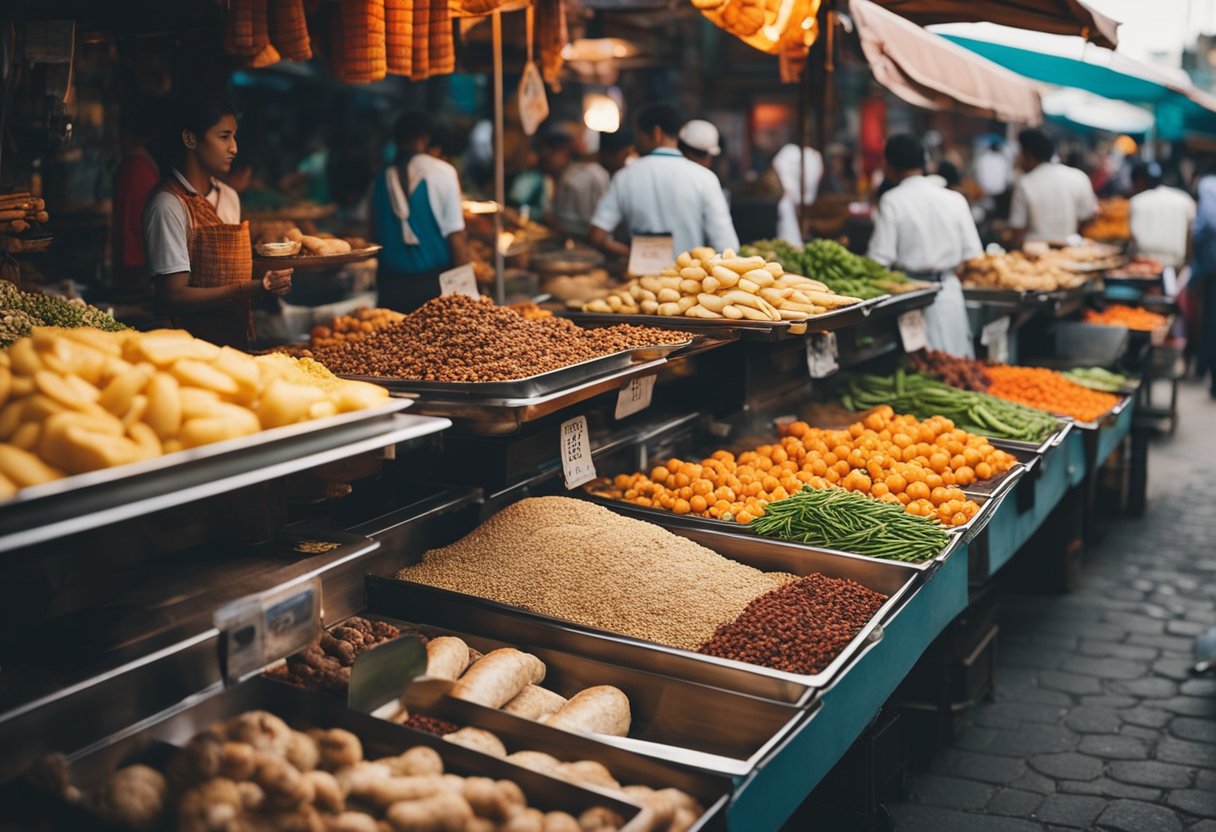
We are confident that global street food will continue to thrive, maintaining a delicate balance between tradition and innovation. As each vendor folds their identity into their culinary delights, they contribute to a rich cultural diversity that speaks to the very essence of this vibrant sector.
In the years ahead, we foresee that street food will persist as a dynamic form of cultural expression. It’s a sphere where the identity of a community is often showcased through flavours and techniques passed down through generations. As we explore the globe, each corner turned offers a new discovery, from the simmering pots of Asia to the aromatic grills of Latin America.
Culinary delights found in street food are set to evolve, blending classic recipes with contemporary twists while never losing sight of their origins. Here’s what we anticipate:
- Sustainability: Street foods adopting more eco-friendly practices.
- Technology: The use of social media to share and celebrate street food experiences will continue to grow.
- Health: An increase in healthier street food options.
- Diversity: Greater cultural fusions, offering a kaleidoscope of tastes.
Our collective journey with global street food reflects an ongoing celebration of who we are, and where we come from. The tapestry of flavours, sights, and smells will only expand as we engage with each other’s histories and futures through these shared culinary experiences.
Frequently Asked Questions
In this section, we address common inquiries about the intricate relationship between street food, culture, and tradition, providing insights into how these elements are intertwined.
How is street food reflective of a region’s cultural heritage?
Street food is a vivid expression of a region’s cultural heritage; it encapsulates local ingredients, time-honoured cooking techniques, and the communal spirit of society. The flavours and dishes that emerge on the bustling streets mirror the history and lifestyle of the local people.
What role does street food play in the preservation of traditional cuisine?
Street food acts as a bastion for traditional cuisine, offering a platform for family recipes to be passed down through generations and for local people to maintain their culinary identity. Vendors are often custodians of age-old recipes that preserve tradition and culture through their dishes.
Which nation’s street food is most celebrated for its taste and authenticity?
Among the myriad nations celebrated for their street food, India’s street food culture is renowned worldwide for its taste and authenticity. It embodies a rich tapestry of flavours that reveal the country’s culinary diversity.
Could you provide an instance of a culinary tradition that originated on the streets?
Certainly, one classic example is the robust street food scene in South Korea. Dishes like Tteokbokki, spicy rice cakes, began as affordable street snacks and are now cherished across the country for their comfort food qualities.
What influence does global street food have on international culinary trends?
Global street food informs and inspires international culinary trends by introducing bold combinations of flavours and innovative dishes. As these street eats gain popularity, they often reshape the menus of eateries worldwide, injecting new life into the global food scene.
Why is it significant to maintain traditional methods in street food preparation?
Maintaining traditional methods in street food preparation is pivotal for preserving the authenticity of the dishes. These techniques often have historical significance and a direct connection to the cultural identity of the community, which enriches the overall dining experience.






